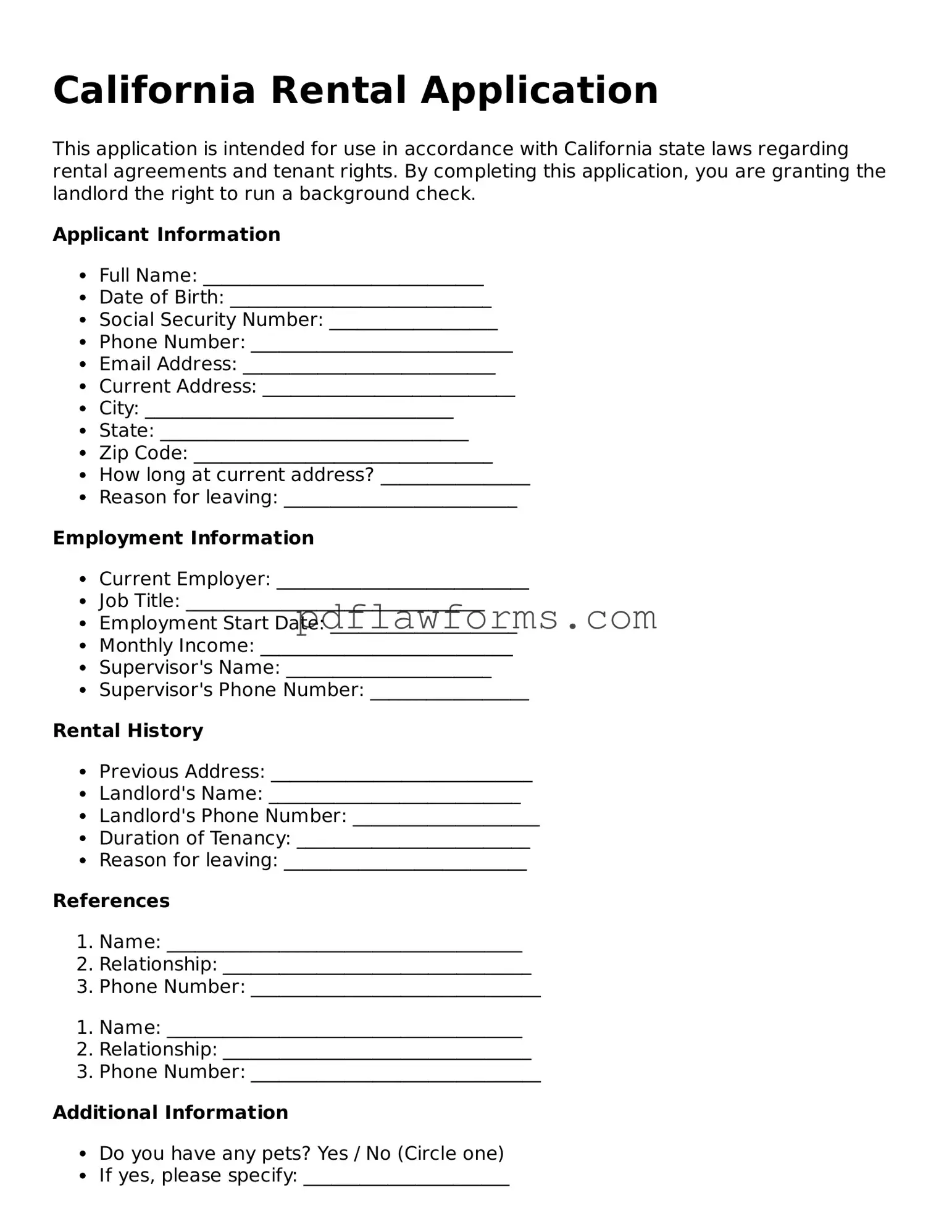Filling out a California Rental Application form can be a straightforward process, but many applicants make common mistakes that can hinder their chances of securing a rental property. One significant error is failing to provide complete and accurate information. Landlords rely on the details provided to assess your suitability as a tenant. Omitting crucial information, such as previous addresses or employment history, can raise red flags.
Another frequent mistake is not disclosing all sources of income. Many applicants only list their primary job, neglecting side jobs or additional income streams. This can lead to a misunderstanding of your financial stability. It is essential to present a full picture of your financial situation, as landlords want to ensure you can meet your rental obligations.
Many individuals also overlook the importance of checking their credit history before submitting the application. A poor credit score can be a significant deterrent for landlords. By reviewing your credit report beforehand, you can address any discrepancies and be prepared to explain any issues that may arise.
Additionally, applicants often forget to include references or provide insufficient information about them. References from previous landlords or employers can significantly bolster your application. Without these, landlords may feel hesitant to move forward, as they lack the necessary insight into your character and reliability.
Another mistake involves neglecting to sign the application. It may seem trivial, but an unsigned application is often considered incomplete. Ensure that you carefully review the entire form and provide your signature where required. This simple step can save time and prevent delays in the application process.
Providing outdated or incorrect contact information is also a common error. If landlords cannot reach you promptly, they may assume you are not serious about the rental opportunity. Always double-check that your phone number and email address are current and clearly written.
Many applicants fail to read the fine print or terms associated with the rental application. Understanding the application fees, processing times, and other obligations is crucial. Ignoring these details can lead to misunderstandings and unexpected costs later in the process.
Lastly, applicants sometimes rush through the application, leading to careless mistakes. Take the time to fill out the form thoughtfully. Review each section carefully to ensure accuracy. A well-completed application not only reflects your attention to detail but also your seriousness about securing the rental.
